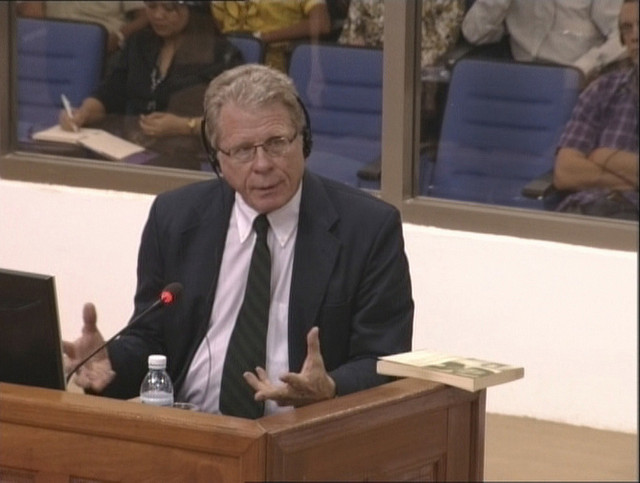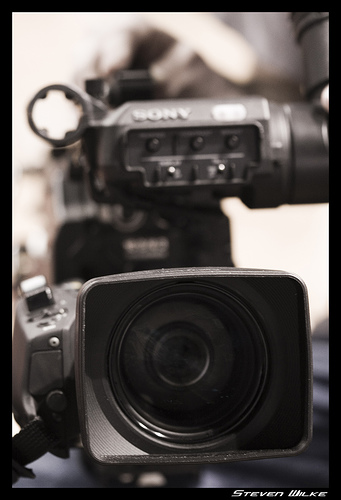January 29, 2015
New Book Review: The Articulate Witness
One of the duties of a litigator is to prepare the client to testify at a deposition, mediation, hearing or trial. Clear, credible and cogent testimony puts the party in the best position to prevail. While judges, arbitrators and juries want to see the contracts and key documents, they also want to hear directly from the parties whose dispute is before the court.
Experienced trial attorneys know what to expect of themselves and their witnesses from the facts of the case. When it comes to public speaking, witness preparation typically includes discussion of the disputed facts and legal arguments in the case. While an attorney may not tell the client or witness what to say, he may ask practice examination questions. Witnesses quickly learn that courtroom or deposition testimony differs from ordinary conversation or interviews. A witness may have little or no public speaking training or experience. There may not be time for a witness to gain valuable experience in Toastmasters International or other activities to practice speaking skills. So how can a witness prepare herself to give effective testimony in her own case?
This month, Brian K. Johnson and Marsha Hunter published a new book, “The Articulate Witness: An Illustrated Guide to Testifying Confidently Under Oath.” This edition is available in print or e-book format. Johnson & Hunter are consultants who train attorneys for a variety of public speaking settings. I have read one of their other books and attended one of their seminars. “The Articulate Witness” is useful to parties and witnesses seeking an overview of the legal testimonial process. It is a valuable resource for attorneys and law students seeking insights in how to better prepare their clients to testify. Professional experts evaluating their own habits and skills would benefit as well. The book is a breezy 50 pages with copious illustrations. I finished it riding on the D.C. Metro between the Judiciary Square & West Falls Church stations. The book focuses on the mechanics of speaking confidently in litigation situations, including cross-examination. The book would be useful to a witness when they first know that a deposition, hearing, trial, etc. will occur. It is not a good book to read the evening before the big day. The reader may desire to practice some of the exercises or discuss them with the attorney beforehand. The book is not a proper substitute for trial preparation with one’s attorney.
A common mistaken belief is that public speaking involves only expressing one’s thoughts using one’s voice. Johnson & Hunter do a great job of showing how it is also a “physical” activity, involving posture, gestures, handling exhibit documents, facial expression and eye contact.
“The Articulate Witness” is an excellent reference for witnesses,attorneys, experts or any other person whose profession or circumstances require him to speak in a legal proceeding. Mastery of the facts and laws is not sufficient. One must be prepared to cogently communicate one’s position to others.
photo credit: Extraordinary Chambers in the Courts of Cambodia via photopin cc
March 20, 2014
“Is This a Film?” Video Within Video in the Justin Bieber Deposition
How is technology used in deposition and trials? Last week I attended Technology in Fairfax Courtrooms: Come Kick Our Tires!, a Continuing Legal Education seminar sponsored by the Fairfax Bar Association. This program interested me because real estate and construction cases are rich in photographs, plats, large drawings, sample construction materials and other visual evidence. Courts across Virginia are installing high-tech equipment for use in presenting pictures, video, audio and other media in trials. This seminar is a useful overview of the technological sea change in trial practice, including presenting audio and visual recordings of depositions at trial.
The credibility of a party’s testimony is at the heart of any trial. Sometimes parties and other witnesses will change their testimony. Lawyers use deposition records to test credibility on cross-examination. A video or audio recording can recreate the deposition vividly for the jury. Impeachment by video is not a feature of most trials because of significant time and expense associated with use of the technology.
At the courtroom technology seminar, someone mentioned pop music superstar Justin Bieber’s March 6th video deposition. This video leaked to the news media. The lawsuit alleges that Mr. Bieber’s entourage assaulted a photojournalist. I usually avoid following the news about celebrities’ depositions. I am familiar with the usual witness behavior. I’ve taken depositions of parties, experts and other witnesses. A celebrity may not be any more prepared for a deposition than an ordinary person. I watched excerpts of the Justin Bieber deposition on YouTube to see if it illustrated any new strategies.
In one excerpt, attorney Mark DiCowden shows a video of a crowd of people next to a limousine. Mr. Dicowden asked Bieber to look at the “film” on a screen behind the witness. The witness glances at the screen, turns back to DiCowden and evasively responds, “Is this a film?” DiCowden tried to focus Bieber on the video to establish a foundation for questions. As a viewer, I struggled watching the screen within a screen while following the examination. To capture Justin Bieber’s interaction with the video, the court reporter zoomed out, making both the video and Bieber smaller. If counsel tried to use this at trial, I imagine the jurors, sharing monitors, would struggle with this as well, with the added distraction of live court action. Justin Bieber’s evasive remarks and body language stand out here in what might otherwise be a disjointed use of technology. Since only excerpts are available, it is difficult to determine whether he went on to actually answer substantive questions about the video.
I wonder whether Plaintiff’s decision to incur the expense of this video deposition (and any related motions) will ultimately be useful for settlement or resolving the case in the courtroom. How will the deposition record look to the jury weighing the credibility of the witness? The Justin Bieber deposition provides some insight into use of video exhibits within a video recorded deposition. Getting an adverse witness to alternatively focus on questions and a video playing behind him is a challenge.
Even if your case does not involve celebrities, a practice run helps to prepare you for a video deposition. For example, the attorney taking the deposition could experiment with different layouts for the camera, people, screen and other visual exhibits to see how they look on replay. On the other side, the witness may learn something from viewing a video of himself answering practice deposition questions. Retain a lawyer with trial and deposition experience with evidence similar to your dispute.
featured image credit: Steven Wilke via photopin cc


